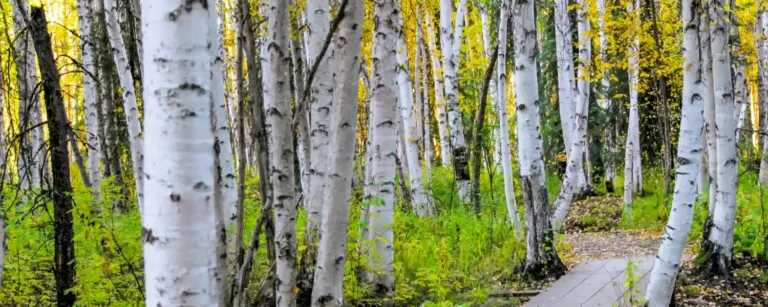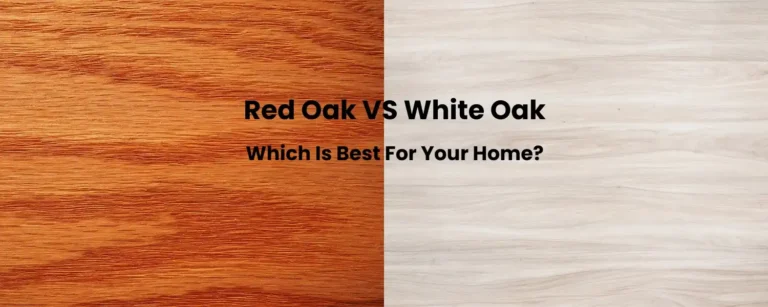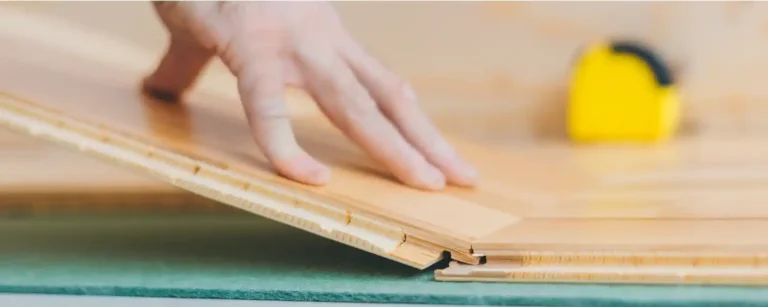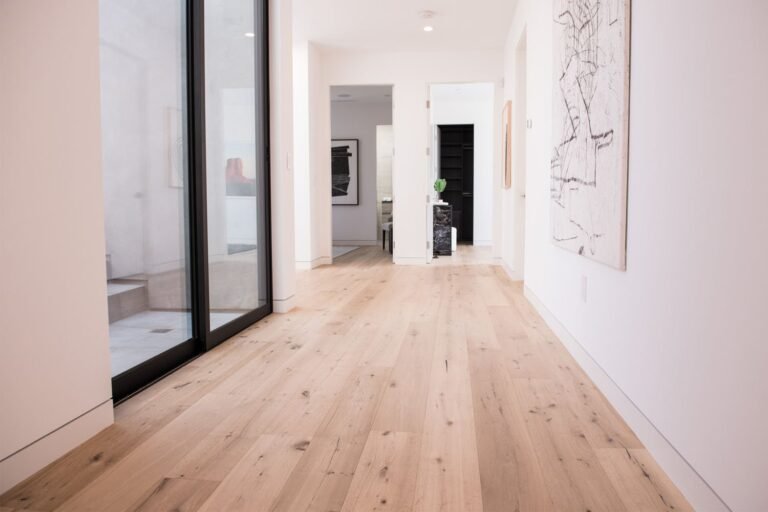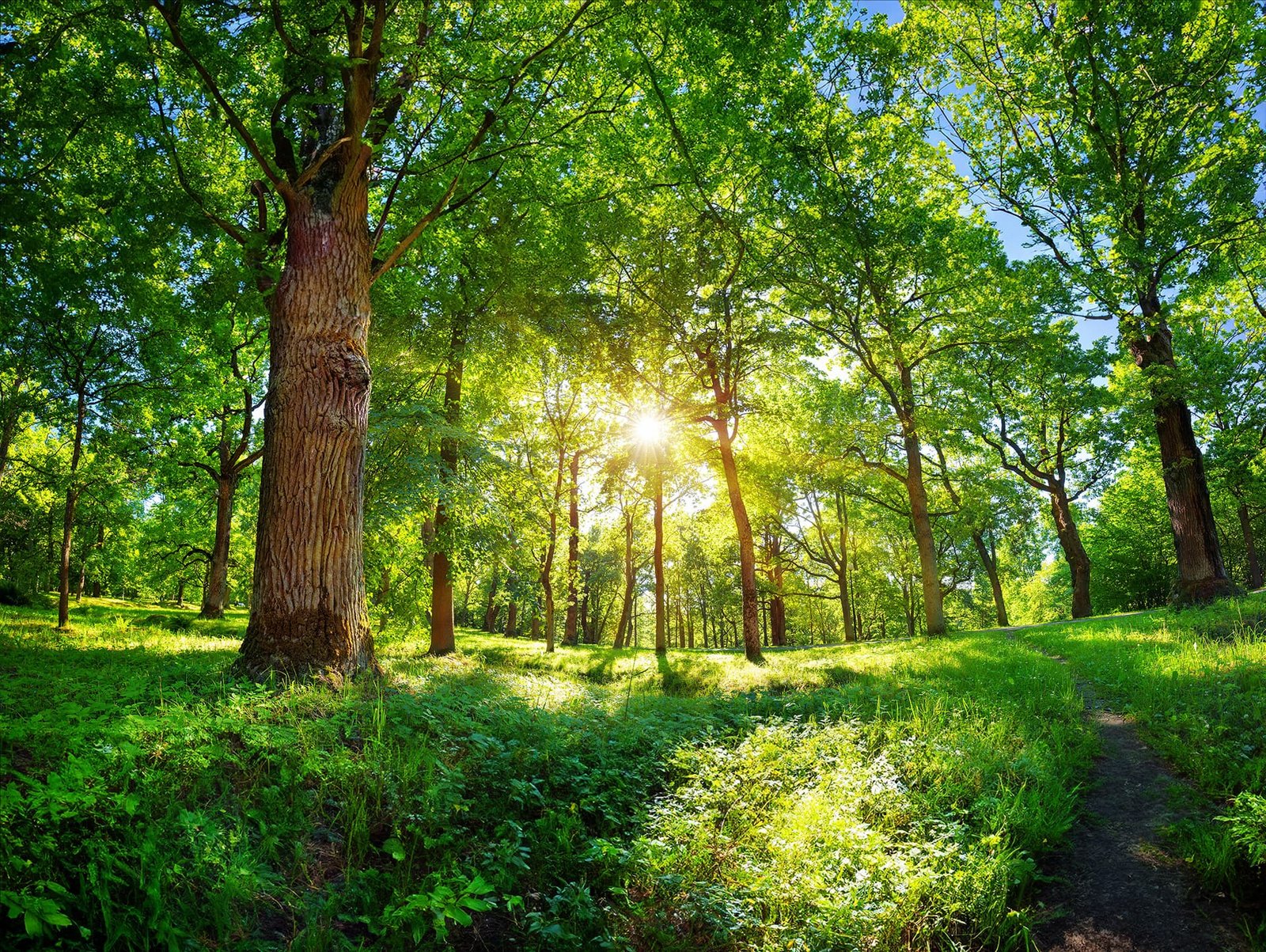Birch vs Maple Flooring: Comparative Guide to Choosing the Best Hardwood
Considering birch vs maple for your engineered hardwood flooring needs? Birch, celebrated for its elegant grain patterns and cost-effectiveness, offers a warm aesthetic and affordability. Maple, renowned for its exceptional durability and sleek appearance, is ideal for high-traffic areas. This guide will discuss both options, helping you make an informed decision that enhances your space.
Birch Flooring
Birch flooring is elegant and durable, making it a popular choice among homeowners. Let’s explore the distinctive features that make birch a compelling option for your flooring.
Characteristics of Birch Wood
Birchwood has unique qualities that set it apart from other flooring. Its smooth texture and moderate density make it a favored choice among homeowners. Moreover, birch is renowned for its excellent versatility, blending into various interior designs effortlessly.
Grain Patterns
One of the most striking features of birch flooring is its distinctive grain patterns. Birch floors look nice and fancy with their fine, even texture and subtle grain variations. Birch flooring presents versatile options to enhance residential spaces’ aesthetics in classic and contemporary styles.
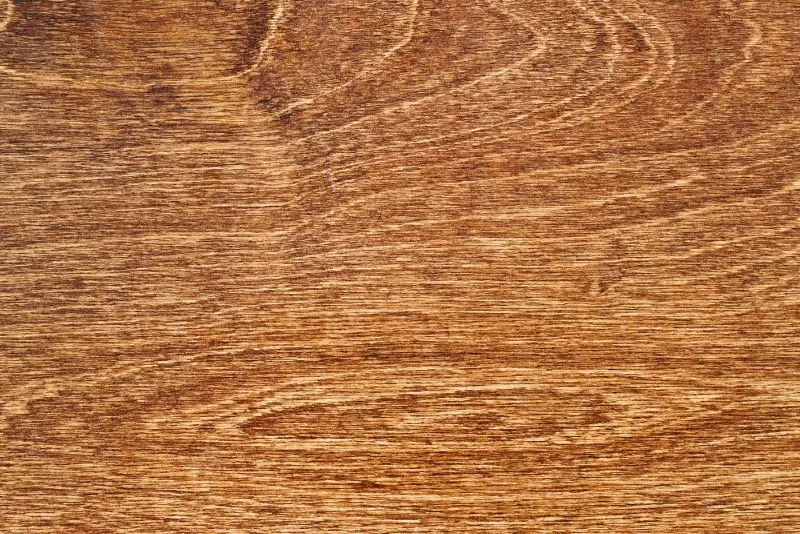
Color Variations
From creamy whites to golden browns, birch wood offers a spectrum of colors that can brighten any room, fitting various design themes from Scandinavian to rustic.
Hardness and Durability
Despite not being the hardest hardwood, birch flooring is remarkably durable and can withstand everyday wear and tear. Its medium hardness protects against scratches and dents, making it an excellent option for high-traffic areas. With proper care, birch flooring can retain its beauty and functionality.
Pros of Birch Flooring
Birch flooring offers many advantages, making it an attractive choice for homeowners seeking both style and practicality. Let’s explore some key benefits of choosing birch flooring in your home.
Affordable Option
Birch flooring is more cost-effective than premium hardwoods such as oak or walnut. It allows homeowners to enjoy the beauty and quality of hardwood flooring without straining their budget.
Ease of Installation
Another notable benefit of birch flooring is its ease of installation. Because of its uniform grain and consistent texture, birch is relatively easy to install.
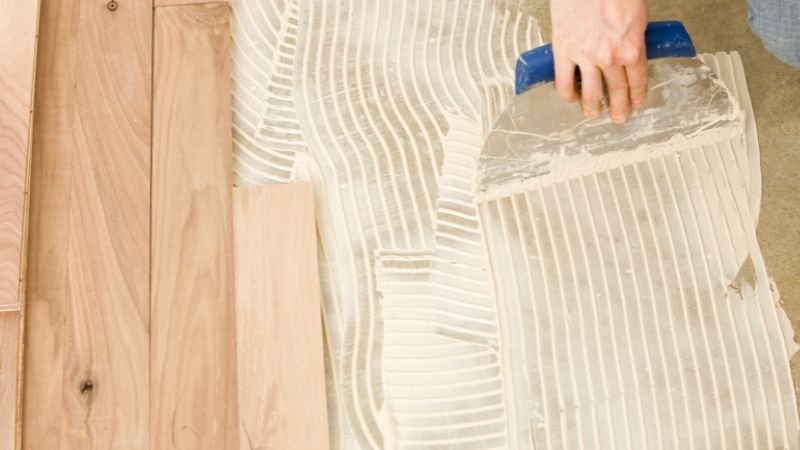
Resistance to Wear and Tear
Birch flooring is known for its endurance against wear and tear, making it ideal for busy households. Its medium hardness and dense composition allow it to withstand heavy foot traffic.
Cons of Birch Flooring
While birch flooring offers numerous advantages, it’s also essential to consider its potential drawbacks. Let’s explore some of its disadvantages:
Susceptibility to Scratches
One major drawback of birch flooring is its susceptibility to scratches and dents. While birch is relatively durable, it may not be as resistant to surface damage as other hardwood floorings.
Limited Availability of Grades
Another drawback is the limited availability of grade compared to other hardwoods. Birch flooring is usually available in select and better grades.
Prone to Water Damage
Birch flooring is more prone to water damage than other hardwoods. While proper sealing and maintenance can help reduce the risk, it’s essential to promptly address any spills or moisture exposure to prevent warping or discoloration.
Maple Flooring
Maple flooring is a popular choice because of its timeless elegance and durability. Now, let’s explore the characteristics that make it a standout option.
Characteristics of Maple Wood
Maple wood exhibits several desirable characteristics that contribute to its popularity as a flooring material for residential applications:
Grain Patterns
Maple flooring stands out because of its unique grain patterns, which add a touch of sophistication. Whether you want a modern or classic style, maple flooring can give your space a stylish and charming feel.

Color Variations
Maple’s color palette ranges from light cream to deep amber. It is versatile for various decorating styles, from contemporary to traditional.
Hardness and Durability
Maple ranks high on the Janka hardness scale, making it exceptionally resistant to dents and scratches. They are ideal for areas with heavy foot traffic or commercial use.
Pros of Maple Flooring
Maple flooring offers many benefits, making it a top choice for homeowners seeking style and durability. Let’s explore its key advantages.
Strength and Durability
Maple flooring is incredibly strong and durable. Its dense composition and sturdy structure make it resistant to everyday wear and tear, ensuring it can withstand the demands of daily use.
Resistance to Dents and Scratches
Maple flooring is highly durable and perfect for high-traffic areas. Its tight grain and dense fibers protect against dents, scratches, and wear.
Versatile Aesthetic Appeal
Maple flooring has a versatile and attractive appearance that can enhance any interior design. Its natural beauty complements modern and traditional styles, providing limitless design options to match your taste.

Cons of Maple Flooring
While maple has many advantages, it also has some disadvantages. Let’s be informed about its disadvantages before making the right decision.
Higher Cost Compared to Birch
Maple flooring is more expensive than other hardwood options. While maple’s exceptional durability and beauty justify its premium price, it can increase the upfront cost of your flooring.
Prone to Yellowing Over Time
Maple flooring is more prone to yellowing, especially when exposed to direct sunlight. While this natural aging process adds character and warmth to the wood, some homeowners may prefer something else.
Detailed Comparison: Birch vs Maple
Understanding the differences between hardwood flooring options is important for choosing the right one for your home. A detailed comparison can help you make the best decision.
| Aspect | Birch Flooring | Maple Flooring |
| Appearance and Aesthetic Qualities | Subtle grain patterns, warm tones | Uniform appearance, diverse color variations |
| Durability and Longevity | Moderate hardness (Janka rating: 1260), resilient | Exceptional strength (Janka rating: 1450), highly durable |
| Cost Considerations | Generally more affordable | Typically higher cost |
| Maintenance Requirements | Regular upkeep required | Slightly lower maintenance |
Appearance and Aesthetic Qualities
Birch and maple flooring offer different aesthetics to enhance home beauty. Birch has subtle grains and warm, earthy tones for a rustic charm. Maple has a sleek, uniform look with tight grains in various colors for timeless elegance. Both provide versatility to complement any interior design style.
Durability and Longevity
Both birch and maple flooring are durable and long-lasting. Birch has moderate hardness (Janka rating: 1260), making it suitable for most homes. Maple is exceptionally hard and resistant to scratches and dents, making it better for high-traffic areas. While birch can handle daily foot traffic, Maple excels in high-traffic spaces.
Cost Considerations
Birch flooring is generally budget-friendly compared to maple. It is often priced lower than maple due to its availability and straightforward manufacturing process. However, when comparing the overall cost, it’s also essential to consider factors such as grade, finish, and installation costs.
Maintenance Requirements
Regular upkeeping is necessary for maintaining the beauty and quality of both birch and maple flooring. It includes routine cleaning, occasional refinishing, and promptly addressing spills and stains. While both species require maintenance, maple flooring generally demands less upkeep due to its superior scratch and surface damage resistance compared to birch.
Environmental Impact and Sustainability of Birch and Maple
Birch and maple flooring are eco-friendly. Both hardwood species are sourced from responsibly managed forests and certified by reputable forestry organizations like FSC (Forest Stewardship Council). Additionally, both flooring are renewable resources that can be replenished through sustainable forestry practices, making them environmentally responsible choices for your home.
Installation and Finishing Options for Birch and Maple Flooring
Both birch and maple flooring offer a variety of installation methods and finishing options, allowing you to tailor the process to meet your design needs and practical requirements.
Installation Methods: Birch and maple can be installed using traditional nail-down, modern glue-down, or versatile floating floor systems. This flexibility makes them suitable for various residential and commercial applications.
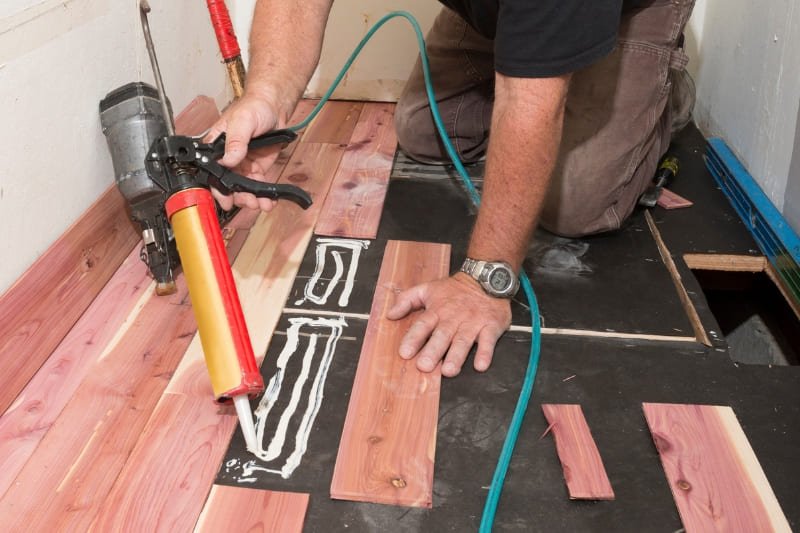
Finishing Varieties: Both types of wood are compatible with a broad spectrum of finishes. Oil-based, water-based, and UV-cured finishes are all applicable and can enhance the durability and appearance of the floors. Birch generally presents a lighter finish that accentuates its natural grain, while maple offers a robust canvas for various finishes, from light to dark, due to its dense grain structure.
Considerations: While both are adaptable to various installation and finishing techniques, it’s important to consider each’s specific characteristics. Birch’s softer surface may require more delicate handling during installation and a careful finish selection to prevent premature wear. In contrast, maple’s hardness lends itself to a wider range of finishing techniques but may need more precise installation to accommodate its density.
Comparison with Other Wood Flooring Options
Hickory vs Birch vs Maple
| Feature | Hickory | Birch | Maple |
| Appearance | Noticeable, varied grain, rich color | Subtle grain, light color tones | Light to medium color, fine-grain |
| Cost (per sq ft) | $3 – $6 | $3 – $5 | $3 – $6 |
| Installation Difficulty | Moderate to difficult due to hardness | Moderate, softer than Hickory | Moderate, harder than Birch |
| Installation Method | Nail-down, glue-down, and floating method | Nail-down, glue-down, and floating method | Nail-down, glue-down, and floating method |
| Finishes Available | Wide range, from natural to dark | Limited to lighter finishes | Versatile, handles various finishes |
| Durability | Highly durable, resistant to wear | Moderate durability | High durability, less than Hickory |
Walnut vs Birch vs Maple
| Feature | Walnut | Birch | Maple |
| Appearance | Rich dark colors, fine grain | Subtle grain; light color tones | Light to medium color; fine grain |
| Cost (per sq ft) | $4 – $9 | $3 – $5 | $3 – $6 |
| Installation Difficulty | Moderate, softer than Hickory and Maple | Moderate, softer than Hickory | Moderate, harder than Birch |
| Installation Method | Nail-down, glue-down, and floating method | Nail-down, glue-down, and floating method | Nail-down, glue-down, and floating method |
| Finishes Available | Good for darker finishes | Limited to lighter finishes | Versatile, handles various finishes |
| Durability | Good durability, but less than Maple | Moderate durability | High durability, less than Hickory |
Upgrade Your Space with the Elegance of Engineered Hardwood
The comparison of birch and maple flooring highlights distinct qualities and benefits for homeowners. Birch flooring offers subtle grain patterns, warm tones, and affordability, ideal for budget-conscious elegance. Conversely, maple flooring provides a uniform look, color diversity, and high durability, perfect for high-traffic areas.
At Villagio Wood Floors in California, we specialize in providing top-quality engineered hardwood flooring, including birch and maple options. Whether you’re a retailer looking to enhance your inventory or a homeowner needing expert advice, our team is ready to help. If you need further assistance choosing the right flooring after reading this blog, contact us for tailored advice. Trust Villagio Wood Floors to meet all your flooring needs confidently.
Birch vs Maple – FAQs
Is birch a cheap wood?
Yes! Birch is an affordable hardwood flooring option. While cheap, it is also durable, offering excellent value for money.
Does birch flooring attract bugs?
No! Birch flooring typically doesn’t attract bugs or pests. However, like any natural wood product, birch flooring is prone to insect infestations if not properly stored, installed, or maintained.
Which stains better, birch or maple?
Maple flooring stains better because of its tight grain and dense structure. It allows for more even and predictable staining, making it superior finish quality.
Can both types of flooring be refinished?
Yes! You can refinish both the floorings to restore their appearance and extend their lifespan.

